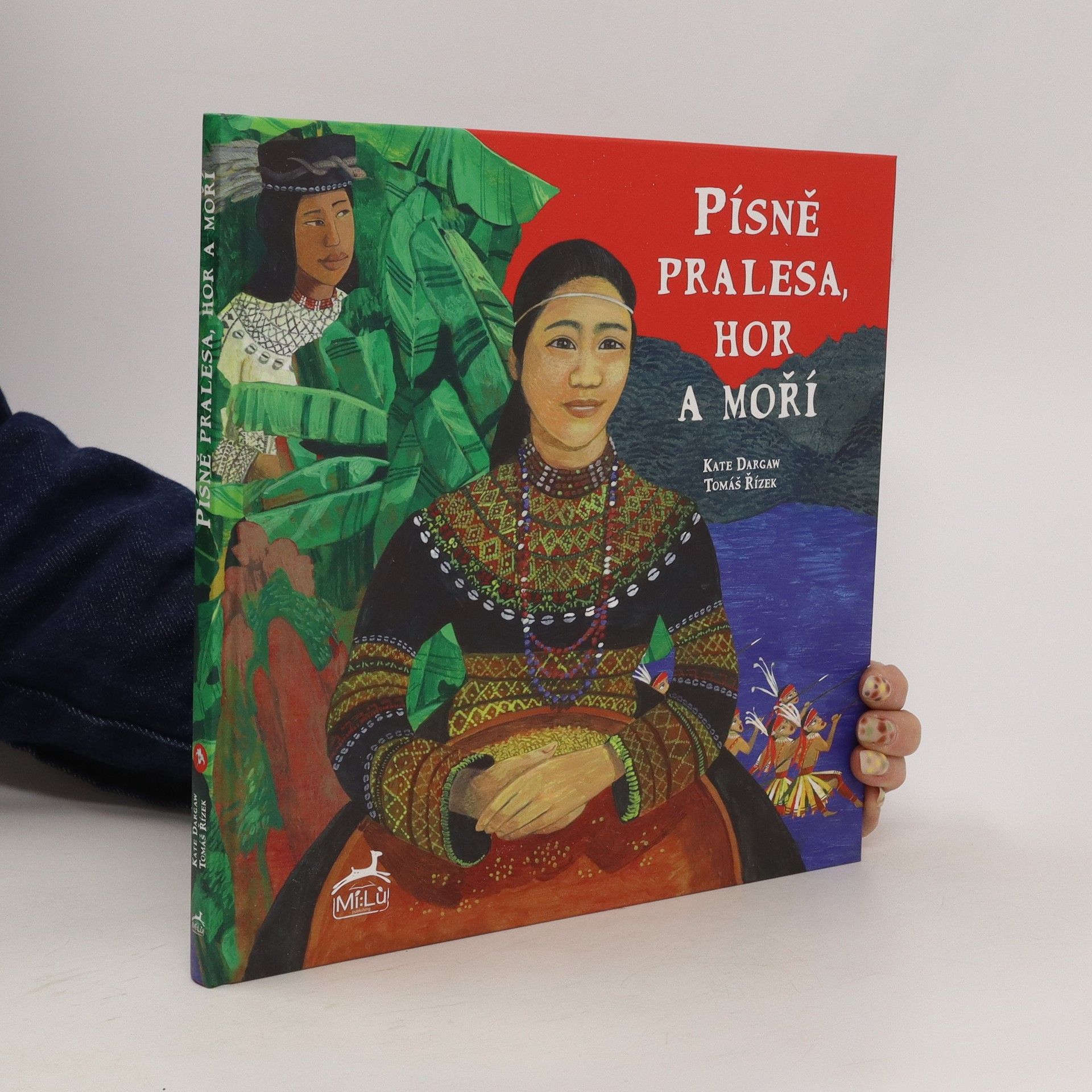Tři příběhy tří domorodých kmenů Rukai, Atayal a Pangcah (Amis) nás vrací zpět na počátek ke kořenům tchajwanské domorodé kultury. Tchaj-wan známý též pod názvem Formosa, neboli Krásný ostrov, leží v Tichém oceánu nedaleko čínské provincie Fu-ťien, mezi Filipínami a Japonskem. Zde jej omývá teplý mořský proud Kurošio, který k jeho břehům přináší bohatý mořský život. Hornatý ostrov ležící na pomezí tropického a subtropického podnebného pásu je nejen domovem řady unikátních endemických druhů, ale i domorodých kmenů melanésko- polynéského původu, jejichž kultura vyrůstá v těsném sepětí s místní přírodou. Příběhy původního obyvatelstva se prochází levharti obláčkoví, černí medvědi ušatí či obávané zmije, jakými jsou ploskolebci nosorozí. Kmeny s nimi uzavírají své pokrevní svazky. Čelenky náčelníků zase zdobí peří bažantů mikádo. Boje, které bojovníci svádí, se vedou proti nelítostným Sluncím nebo obludám, které ohrožují život kmene a teprve s velkým úsilím je lze překonat. Bohatě ilustrovaná kniha dává nahlédnout do ústní tradice melanésko- polynéských kmenů a je určena čtenářům každého věku, od těch nejmenších až po ty nejstarší. ---------------------------- Taiwan is an island in the Pacific Ocean off the coast of mainland China. For centuries, the island has had a diverse mix of cultures and languages . The indigenous tribes on the island are distinctive examples . Their languages are classified as Austronesian languages close to those of the inhabitants of today's Philippines, Indonesia or New Guinea and Polynesia. Taiwan has thus become the platform where you can see the influences brought by the migrants from Pacific and Indian Ocean islands. The literary tradition of the Taiwanese is very rich, although they do not have their own writing system. The key to choose these three stories is the title of the book loosely hidden by the topics of the selected stories. It contains the natural elements that make up the world around us. In this book we find poetic stories about fire, water and the earth. They are stories full of known archetypes of humanity. We learn about the long journey to the end of the world and shooting down of the Sun, a story not unlike the well-known legend Beauty and the Beast. We also find the well-known battle of the archetypes of good and evil in the story of the natives' victory over the monsters. This wonderful book with three indigenous stories, which shows the world Taiwanese culture and legends through delicate but colorful illustrations, will not disappoint discerning readers of any age.
Kate Dargaw Livres




Písně pralesa, hor a moří
- 79pages
- 3 heures de lecture
Tři příběhy tří domorodých kmenů Rukai, Atayal a Pangcah (Amis) nás vrací zpět na počátek ke kořenům tchajwanské domorodé kultury. Tchaj-wan známý též pod názvem Formosa, neboli Krásný ostrov, leží v Tichém oceánu nedaleko čínské provincie Fu-ťien, mezi Filipínami a Japonskem. Zde jej omývá teplý mořský proud Kurošio, který k jeho břehům přináší bohatý mořský život. Hornatý ostrov ležící na pomezí tropického a subtropického podnebného pásu je nejen domovem řady unikátních endemických druhů, ale i domorodých kmenů melanésko- polynéského původu, jejichž kultura vyrůstá v těsném sepětí s místní přírodou. Příběhy původního obyvatelstva se prochází levharti obláčkoví, černí medvědi ušatí či obávané zmije, jakými jsou ploskolebci nosorozí. Kmeny s nimi uzavírají své pokrevní svazky. Čelenky náčelníků zase zdobí peří bažantů mikádo. Boje, které bojovníci svádí, se vedou proti nelítostným Sluncím nebo obludám, které ohrožují život kmene a teprve s velkým úsilím je lze překonat. Bohatě ilustrovaná kniha dává nahlédnout do ústní tradice melanésko- polynéských kmenů a je určena čtenářům každého věku, od těch nejmenších až po ty nejstarší.
Die Chinesen zählen die Jahre nach 12 Tieren. Warum gerade Maus, Ochse, Tiger, Hase, Drache, Schlange, Pferd, Ziege, Affe, Hahn, Hund und Schwein? Nun, das sind die Gewinner im großen kaiserlichen Rennen. Aber so einfach war das nicht, zu den Auserwählten zu gehören! Das Rennen, das der Jadekaiser ausruft, wird zum Nervenkitzel für alle Teilnehmer. Und weil die Maus die Katze dabei auch noch so schamlos hintergangen hat, sind sich in allen Ländern der Welt heute Katz und Maus spinne Feind!
Regelmäßig zum Jahresanfang erwacht das Nian-Monster im Meer, steigt an Land und reißt alles, was es erwischt mit sich: Mensch und Tier. Deshalb raffen die Dorfbewohner Hab und Gut zusammen und fliehen in die Berge, sobald sie sein Grollen hören. Großmutter und ihr Enkel schaffen die Flucht nicht mehr und verstecken sich im hintersten Winkel des Hauses, Türen und Fenster halten sie fest verschlossen. Ein Bettler kommt auf der Suche nach etwas Essbarem des Weges und wundert sich über das verlassene Dorf. Natürlich teilen Großmutter und ihr Enkel mit ihm. Und dann hat er sogar eine Idee, wie man das Monster vertreiben kann: für immer! Für die heimkehrenden Dörfler grenzt das an ein Wunder. Deshalb feiern heute noch die Chinesen ihr Neujahrsfest so wie es der Bettler vorgemacht hat.